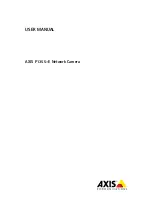
34
“!” before the IP Address to act as the logical NOT operator. The
Subnet
Mask
column specifies the Subnet Mask for the IP Address for both Source
and Destination IP Addresses. Select only the correct Subnet Mask for your
specific IP Address.
The
Operator
dropdown boxes specify the relative operator to use for
the current Start and End ports. The Start Port specifies the port that will be
used as the beginning port in the range. The End Port is the end ing port
number for the specified range. If the Start Port is empty, the Start Port and
the End Port column will be ignored.
The “=” operator specifies an equal port number. If the End Port is
empty, the filter rule will set port the number to be the value of the Start Port.
Otherwise, the port range is between the Start Port and the End Port
(including the Start Port and the End Port).
The “!=” operator specifies a “not equal to” operation. If the End Port is
empty, the port number is not equal the value of the Start Port. Otherwise,
this port number is not between the Start Port and the End Port (including the
Start and End Port).
The “>” operator is used to specify that the port number is larger than
the Start Port (including the Start Port).
The “<” operator specifies that the port number is less than the Start
Port (including the Start Port).
The
Keep State
checkbox can be enabled to save protocol information
about the TCP/UDP/ICMP communication sessions within the DI-804. The
Protocol option must be set to TCP, UDP, TCP/UDP or ICMP to work
properly.
The
Source Route
checkbox can be used to allow or disable the use of
source routing. Source routing is used to allow the originator of a packet to
















































